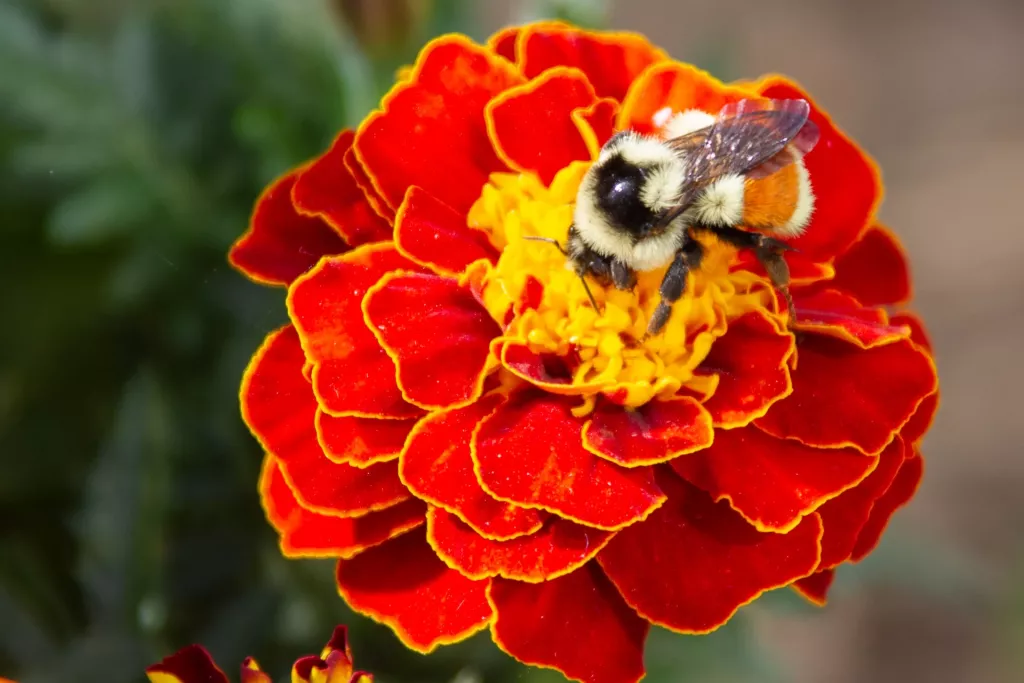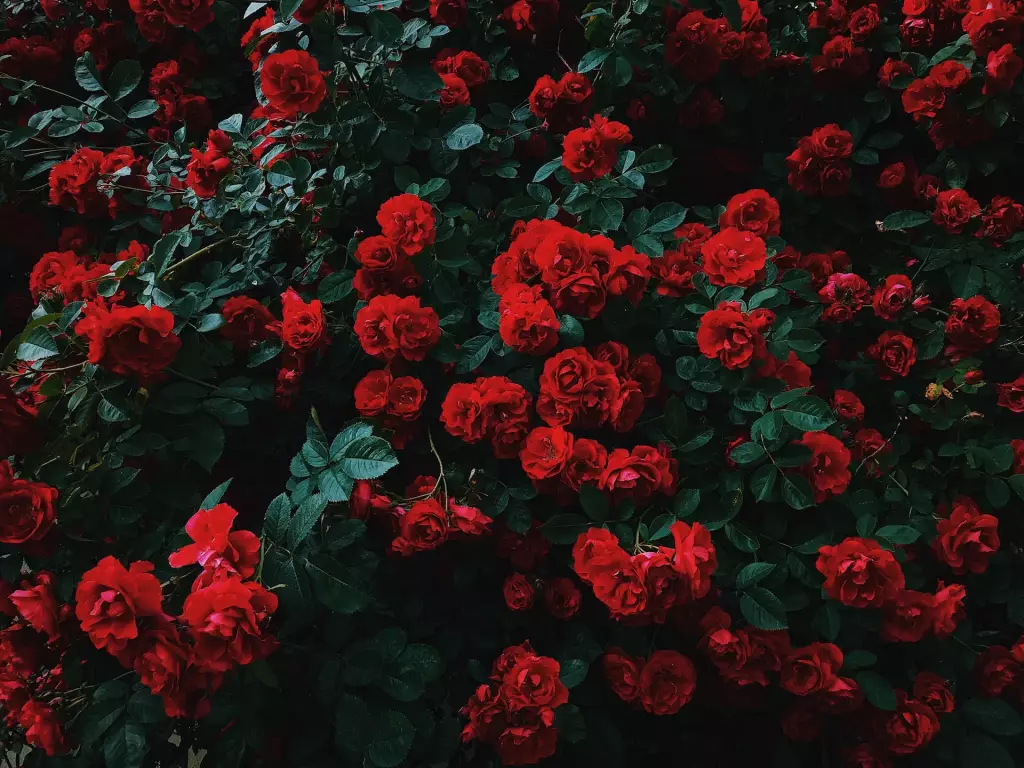What Flowers Do Bees Like Least? 11 Surprising Examples
Flowers add beauty and fragrance to our surroundings, but not all of them are liked by bees. Bees pick the flowers that are rich in nectar and nutritious pollen. If you want the bees to stay in your garden, help these pollinators thrive by carefully selecting what to plant.
The flowers that bees like the least are marigolds, geraniums, feverfew, roses, dianthus, zinnias, mints, basil, chrysanthemums, the cardinal flower, and petunias. Bees ignore these certain types of flowers because of three reasons: they are either red, do not have a tubular shape, or do not have a pleasant scent.
Plants that bees avoid don’t number that many. And that’s because plants and bees have a beneficial relationship. These two life forms have developed this symbiotic relationship for over millions of years. As humans, our duty is to strengthen their bond with the flowers we plant.
Summary
- Bees cannot see the color red because it absorbs UV rays, and so they see it as black.
- Bees will flock to blossoms that provide plenty of nectar and easily accessible pollen, while ignoring sterile or less generous flowers.
- With careful flower selection and placement, you can help bees live and survive.

On this page:
11 Flowers That Bees Like Least
Plants can deter bees by their scents or smells. Bees are extremely sensitive to odors and have a distinct preference for certain flowers over others.
Bright colors and sweet-smelling flowers attract bees. Bees frequently flock to flowers that are purple, and yellow. They also like flowers with pleasing fragrances.
Bees also like certain flowers that have a shape that allows them to land and crawl on the flower to collect pollen and nectar. They are drawn to tubular-shaped flowers that can be crawled into or small, flat flowers that can be walked on.
Bees generally avoid plants with long, narrow blossoms because their short tongues cannot reach the nectar.
Flowers with trumpet shapes, such as honeysuckle, and buttercups, require bees to work harder to reach the nectar. As a result, these flowers aren't as appealing to them.
Honeybees prefer nectar-rich blooms. They collect plant nectar to make honey, as well as pollen to feed their brood and their colonies.
If you want bees to stay around, limit planting these 11 flowers they like least.
Geraniums
Geranium, particularly red geraniums, is another flower that is less likely to be visited by bees.
These flowers contain little to no pollen and have a scent that our pollinators dislike.
Other colors of geraniums, especially purple, are an excellent choice for your garden if you want to keep your bees around.
Geraniums produce an abundance of beautiful clusters of blooms.
Feverfew
These dainty white and yellow flowers, which resemble daisies, make an excellent addition to your bee-free garden.
Feverfew has a strong citrus-like odor that bees do not enjoy.
Although, they have been known to keep other pollinators at bay. Feverfew can self-pollinate and does not require pollinators.
Feverfew is a perennial that can grow as tall as three feet. Its leaves have medicinal properties when dried and are commonly used to treat headaches.
Roses
Roses, especially the red ones, are not appealing to bees. These flowers are well-known for their beauty, but not to bees.

Lighter-colored varieties such as white rose and those rich in pollen are what attracts bees. These are a little more difficult to grow, but they are well worth the effort.
If you want to grow roses, look for the unscented variety. The thorns on these flowers are stinging, so be careful.
Dianthus
Dianthus is another flower that has little to no nectar that's available for foraging bees.
With little pollen or nectar available, dianthus is unlikely to attract more than a solitary passing bee.
Dianthus, or Sweet Williams, is generally unappealing to bees, especially the red varieties.
UV rays are absorbed by the color of most red blooms, making them less appealing to bees flying by.
White, yellow, or other bright-colored blooms reflect the rays and that's why they attract bees.
Dianthus is a perennial that looks and blooms like a carnation, but is smaller.
Basil
Basil is another aromatic herb that repels bees.
Basil is another excellent choice for your garden that serves as a pest repellent.
While we humans enjoy the aroma of basil in a rich tomato sauce, bees and wasps are turned off by it.
Basil requires heat to grow and prefers a location that receives 6–8 hours of direct sunlight each day.
Chrysanthemums
Chrysanthemums provide nectar and are sweet-smelling, but they can harbor spiders, which attack bees looking for nectar.
This means that bees may be killed while foraging on mums, and that's why they avoid mums instinctively.
Most mums are double flowered and lack pollen and nectar, making them unappealing to bees. And because of this, despite the bright blooms of orange, pink, purple, red, white, and yellow, bees dislike chrysanthemums.
The Cardinal Flower
Most bees find it difficult to work the cardinal flower due to the shape of the flower and the length of its flower tube.
Also, it's a red flower. Most bees do not recognize the color, and they perceive it as an unappealing shade of black.

The cardinal flower makes an excellent addition to gardens where bees are not welcome.
This colorful perennial grows to a height of 2–4 feet and width of 12–18 inches. It requires no deadheading or special care to thrive.
This plant will not attract bees, but it will almost certainly attract hummingbirds to your garden. The plant is also resistant to deer and rabbits.
Zinnia
Zinnias are pollinated by butterflies, but are unappealing to bees.
Zinnias are tender annuals that come in a variety of sizes, colors, and flower shapes. These are an excellent addition to any garden, especially if you want to attract butterflies.
These flowering shrubs would look lovely in any garden. They're easy to grow and care for.
The flower's wide, open shape is unappealing to bees, but it is a favorite of the monarch butterfly, another important pollinator.
When planting zinnias, those with colors purple and yellow will be more appealing to bees.
Mints
Mint is an herb that has a scent which repels bees. Mint is a popular scent in the human world, but the bees dislike it.
Mint plants can tolerate a little shade, but keep an eye on them. Because of their rapid growth rate, they can quickly take over a garden.
Bees dislike peppermint. Planting a few peppermint plants alongside your flowers will keep them away from your garden or patio.
Marigolds
Bees dislike marigolds because they have an unpleasant odor and produce very little pollen. Marigold is a low-pollen, annual flowering plant that is easy to grow.
Marigolds have a strong, pungent scent that repels most bees, insects, and pests. Because of this, these flowers are a popular companion plant in vegetable gardens.

Planting a few marigolds in your vegetable garden can help discourage nibbling critters as well as bees.
Marigolds are cheerful little annuals that bloom all summer in cheery oranges, yellows, and reds. They can grow up to 2–5 feet tall, and their sturdy stems will keep the blooms upright without the need for additional support.
Marigold is a double-flowering plant that bees find difficult to penetrate. Bees are not only repelled by these annuals, but they also do not pollinate them.
Petunia
Petunias contain little nectar or pollen, and so they provide little or no nourishment for bees.
Bees may fly around and check up on these various bright-colored petunia flowers.
However, unless the other flowers in the area aren't producing nectar, bees are unlikely to pay much attention to petunias.
